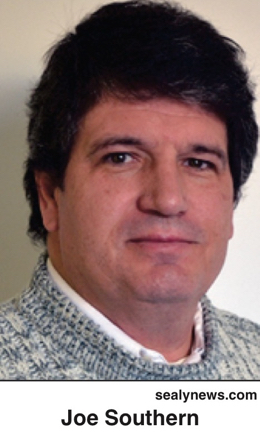Rascals case in brief
In the beginning, in 1989, more than 90 children at the Little Rascals Day Care Center in Edenton, North Carolina, accused a total of 20 adults with 429 instances of sexual abuse over a three-year period. It may have all begun with one parent’s complaint about punishment given her child.
Among the alleged perpetrators: the sheriff and mayor. But prosecutors would charge only Robin Byrum, Darlene Harris, Elizabeth “Betsy” Kelly, Robert “Bob” Kelly, Willard Scott Privott, Shelley Stone and Dawn Wilson – the Edenton 7.
Along with sodomy and beatings, allegations included a baby killed with a handgun, a child being hung upside down from a tree and being set on fire and countless other fantastic incidents involving spaceships, hot air balloons, pirate ships and trained sharks.
By the time prosecutors dropped the last charges in 1997, Little Rascals had become North Carolina’s longest and most costly criminal trial. Prosecutors kept defendants jailed in hopes at least one would turn against their supposed co-conspirators. Remarkably, none did. Another shameful record: Five defendants had to wait longer to face their accusers in court than anyone else in North Carolina history.
Between 1991 and 1997, Ofra Bikel produced three extraordinary episodes on the Little Rascals case for the PBS series “Frontline.” Although “Innocence Lost” did not deter prosecutors, it exposed their tactics and fostered nationwide skepticism and dismay.
With each passing year, the absurdity of the Little Rascals charges has become more obvious. But no admission of error has ever come from prosecutors, police, interviewers or parents. This site is devoted to the issues raised by this case.
On Facebook
Click for earlier Facebook posts archived on this site
Click to go to
Today’s random selection from the Little Rascals Day Care archives….
Click for earlier Facebook posts archived on this site
Click to go to
Today’s random selection from the Little Rascals Day Care archives….
Beware the next generation of Indian captivity tales
Aug. 20, 2012
Endlessly fascinating – and baffling – is how some experts fell headlong for “satanic ritual abuse,” while others managed to keep their wits. This is from an April 25, 1989, Associated Press story:
“David G. Bromley, a sociologist at Virginia Commonwealth University in Richmond, Va., sees not an increase in satanic crime, but a ‘cult scare’ that has more to do with urban legends and modern psychology than with criminology.
“‘I think it’s all a hoax,’ says Bromley, who investigated allegations of cult ‘brainwashing’ in the 1970s that were never proven.
“Bromley says rumors about rings of adults who start day care centers to find children to abuse in satanic rituals are ‘sheer fantasy’ – but fantasy fed by reports of real child abuse and by today’s parents’ guilt and fears of entrusting their children to strangers.
“‘It is not coincidental that allegations of satanic conspiracies are centered on day care centers,’ he says.”
April 25, 1989! Bob Kelly was attending his probable cause hearing. The first McMartin trial was still ongoing. Stephen Ceci and Maggie Bruck were six years from publishing their landmark “Jeopardy in the Courtroom: A Scientific Analysis of Children’s Testimony.” So how was David Bromley able to see through the fog?
“This kind of ‘subversion episode’ is not new,” he told me recently. “There has been one every few decades in American history. The focus has changed but not the phenomenon. Indian captivity tales, Salem witch trials, drug scares, communist scares, immigrant scares, UFO scares.
“There has always been some group or coalition that has found social insecurities a way of advancing its own status. In this case police and therapists made careers out of the episode.
“The story was only plausible for a limited period, and these kinds of events tend to implode eventually. But there are a lot of casualties in the meantime.
“It will happen again, I am sorry to say.”
And when it does…?
Is psychiatry ready to face up to its denial?
 Feb. 1, 2014
Feb. 1, 2014
“As our medical schools and graduate programs fill with students who were born after 1989, we meet young mental health professionals-in-training who have no knowledge or
living memory of the Satanic ritual abuse (SRA) moral panic of the 1980s and early 1990s. To those of us old enough to have been there, that era already seems like a curious relic of the past, bracketed in our memory palaces behind a door we are loathe to open again.
“Some mass cultural phenomena are so emotionally-charged, so febrile, and in retrospect so causally incomprehensible, that we feel compelled to move on silently and feign forgetfulness…
“Despite the discomfort it brings, we owe it to the current generation of clinicians to remember that an elite minority within the American psychiatric profession played a small
but ultimately decisive role in the cultural validation, and then reduction, of the Satanism moral panic between 1988 and 1994….
“Are we ready now to reopen a discussion on this moral panic? Will both clinicians and historians of psychiatry be willing to be on record?”
– From “When Psychiatry Battled the Devil” by Richard Noll in Psychiatric Times (Dec. 6, 2013)
Wow! After more than two years of seeing mental health professionals shrug off responsibility for the moral panic they promoted, I can hardly believe what I’m reading. Noll, an accomplished author and professor, traces how it all happened – and asks, “Shall we continue to silence memory, or allow it to speak?”
An early vote to silence memory came from an unexpected source: Psychiatric Times itself, which clumsily pulled Noll’s piece from its website.
By contrast, Allen Frances, professor emeritus of psychiatry at Duke, offered a powerful – and I hope influential – personal mea culpa.
Lessons from a Windshield Pitting Epidemic
 March 9, 2012
March 9, 2012
“This (Breezy Point Day School) case sounds like the Windshield Pitting Epidemic….
“In the early 1950s, people in the Tacoma-Seattle area began to notice little pits in the windshields of their cars. Rumors started – Martians were landing, it was from nuclear fallout.
“Well, it turns out those pits were always there – they are in every windshield – but no one noticed them until there was anxiety about nuclear testing. For the first time, they were looking at their windshields instead of through them….
“Anxiety makes things take on a different meaning.”
– Mass hysteria specialist Gary Small, psychiatrist at UCLA School of
Medicine, quoted in Philadelphia magazine (April 1991)
How one young reporter changed his mind
 Nov. 8, 2014
Nov. 8, 2014
“In the summer of 1989, I accepted my first job at a daily paper when The Daily Advance hired me to cover a two-county beat – Chowan and Perquimans. When I arrived, Bob Kelly had just been arrested and charged in about a dozen cases. My editor told me about it, almost in passing, and said, ‘You might want to keep an eye on it.’ I did, and for the next two years it consumed my life.
“I was 24 years old with a wife of two years and no children. I had no experience reporting on police and courts and was very naive as to how the system worked. As the case expanded I became convinced of the defendants’ guilt. Their lawyers wouldn’t let them talk and they were hard to reach in jail. Prosecutors were also tight-lipped, but some of the parents couldn’t stay that way.
“For two years all I had to go on were the stories of parents and what I believed to be a mountain of evidence in the hands of prosecutors. Shortly before Bob’s trial began, three important things happened. I finally got to interview two of the defendants (Robin Byrum and Scott Privott). Their stories were very convincing and I was no longer certain of their guilt. I was also promoted to an editing position and was no longer actively reporting on the case. I was in charge of the reporters who would. Also at this time the ‘Frontline’ show came out, pretty much blowing the lid off the prosecution’s case.
“As Bob Kelly’s trial unfolded, I found that the prosecution had little to no evidence. My faith in the case was weakened and I was surprised when Bob was convicted. Then another defendant (Dawn Wilson) fell and Bob’s wife Betsy Kelly pleaded no contest. That upset me because I was convinced she was innocent and I wanted her to fight and prove it.
“At this point in my life, I had become a parent and soon my first marriage would end. I returned home to Colorado but continued to follow the case from afar. I was happy when the convictions were overthrown and the other charges dropped. As a parent I could now see and understand that what was normal childhood behavior was being grossly misinterpreted as signs of child sex abuse.
“In hindsight, I feel bad for everyone involved in the case. Both sides went through hell. Most of all, though, I feel for the children. Their lives were altered and family and community dynamics changed by forces beyond their control and beyond reason.”
– Joe Southern, recalling his experience covering the Little Rascals case for the Elizabeth City Daily Advance
This 1991 piece, reprinted in a Del Rio, Texas, paper, seems to be reporter Southern’s lone Little Rascals story to survive online. He is now managing editor of The Sealy News in Sealy, Texas.
More recently, the Daily Advance has shown far less interest in the case – well, none, actually – or in Nancy Lamb’s responsibility for pursuing and prolonging it.











0 CommentsComment on Facebook